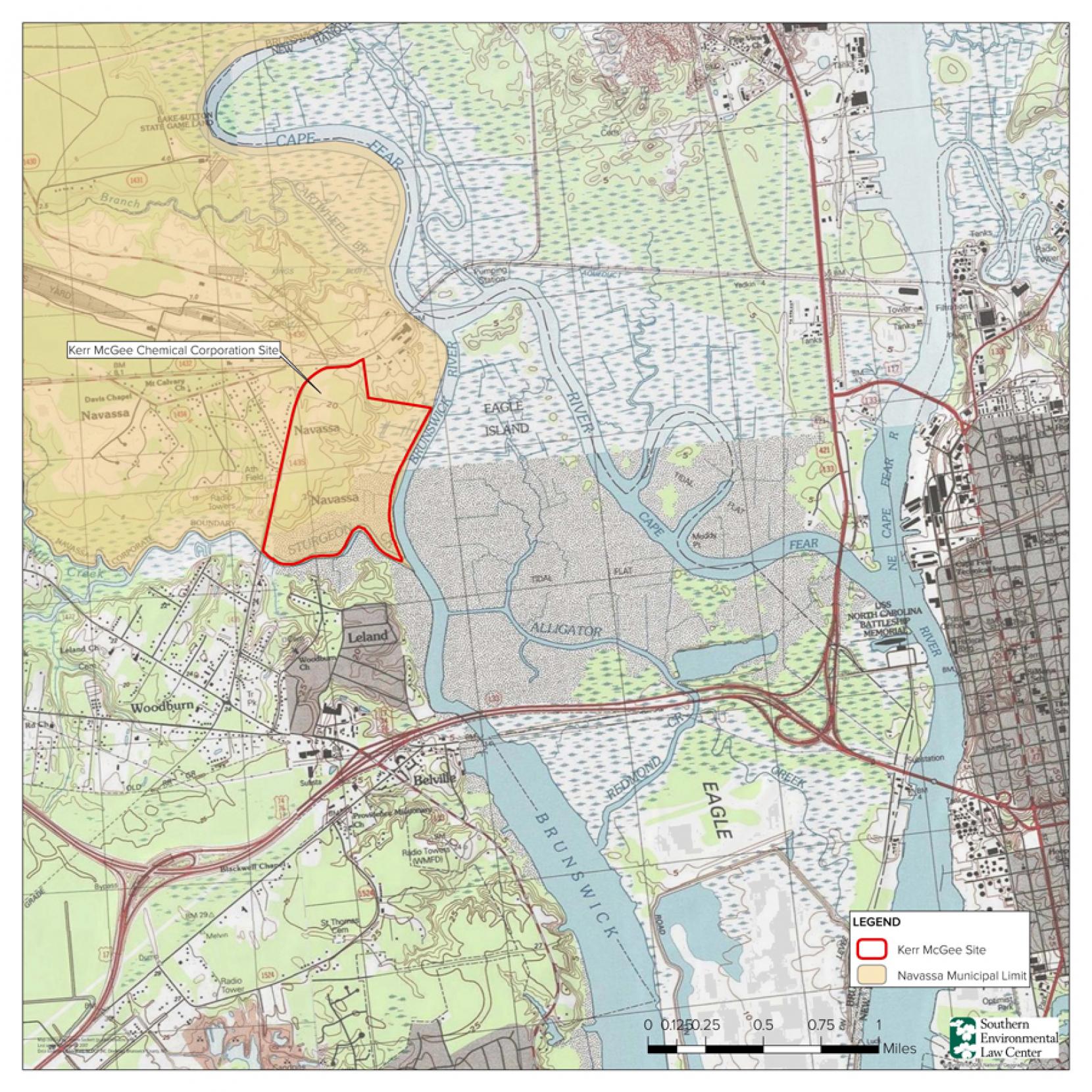“No action” at Superfund site not acceptable
A community in eastern North Carolina is taking action after news that a Superfund site in their neighborhood will be left as-is.
“It is imperative that present or current boards be careful today when making decisions that have major impacts on tomorrow and beyond,” wrote Navassa Mayor Eulis A. Willis. His letter, addressed to the Environmental Protection Agency, outlines why the agency’s proposal to take no action is unacceptable.
His letter demanding full clean-up was submitted to the agency as part of the public comment process regarding the EPA’s proposed No Action decision regarding the contaminated site.
The site in question sits in a mostly African-American community, where, from 1936 until 1974, the Kerr-McGee Chemical Corporation operated a wood-treating plant. There, workers applied creosote preservatives to various products from railroad ties to telephone poles. A likely human carcinogen, creosote remains in the soil and sediment of the site. Those soils are leaching creosote-related contaminants to groundwater, which flows to the surrounding tidal marshes, Sturgeon Creek, and the Brunswick River.
According to comments submitted Monday by Navassa Community Economic and Environmental Redevelopment Corporation, a local non-profit, and SELC, the law, policy, and clean-up precedent associated with these types of wood treatment sites require EPA to reverse its “no action” decision and to require a comprehensive cleanup of the Kerr-McGee Superfund site to protect the Navassa community and the surrounding environment.
Instead of using $3 million of the $93 million in trust funds specifically designated to clean up contamination at the Kerr-McGee Superfund site so it can be used for homes, parks, and other uses envisioned by the Navassa community to promote economic growth, in October the federal agency proposed to do nothing. Instead they could take the designated funds to use in other communities. Leaving the Superfund site contaminated from previous creosote industry activities would permanently limit the uses of the area despite scenic river views near the Superfund site and rapid growth in the rest of Brunswick County.
In 2005, Kerr-McGee created a spin-off corporation, Tronox, in an attempt to avoid environmental liabilities at multiple contaminated sites, including the Navassa location. Tronox lacked the capital to handle the environmental liabilities, and filed for Chapter 11 bankruptcy in 2009. As a result of a fraudulent conveyance lawsuit, Tronox was found liable for damages of $5.15 billion. It was the largest governmental recovery for environmental cleanup in history. The bankruptcy settlement, known as the Tronox settlement, established the $5.15 billion trust fund to pay for cleanup costs at contaminated Kerr-McGee sites across the country.

This map shows the location of the former Kerr-McGee plant along the Brunswick River, about 5 miles east of Wilmington, North Carolina. Kerr-McGee Site Map

